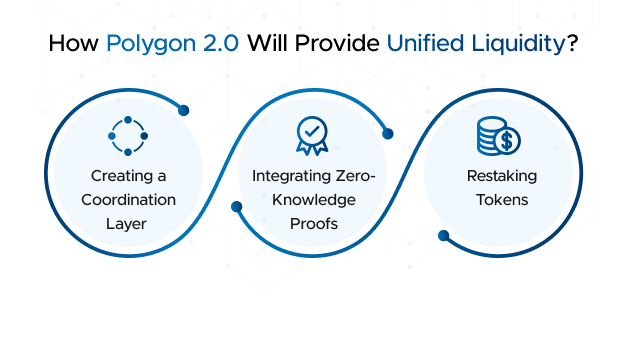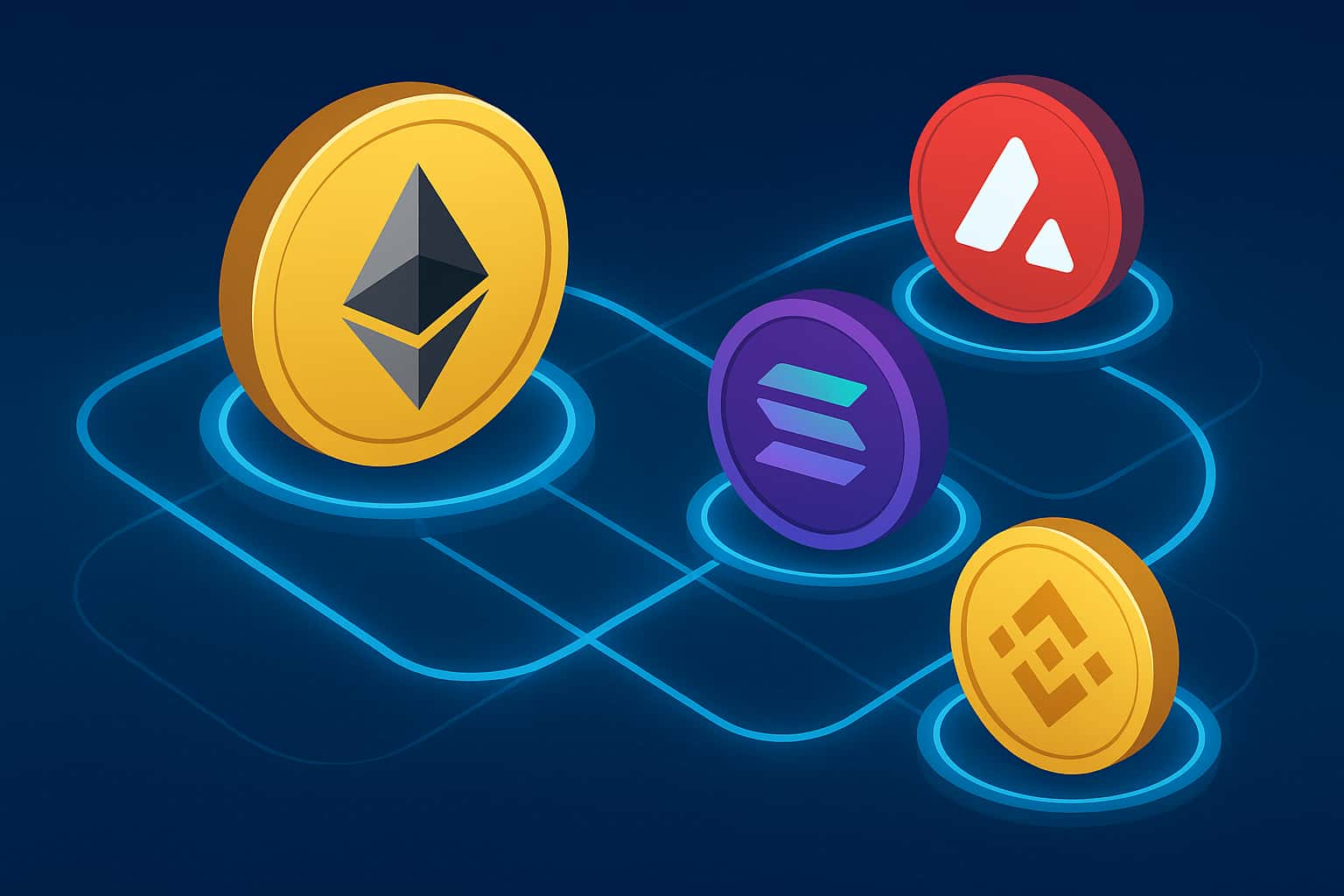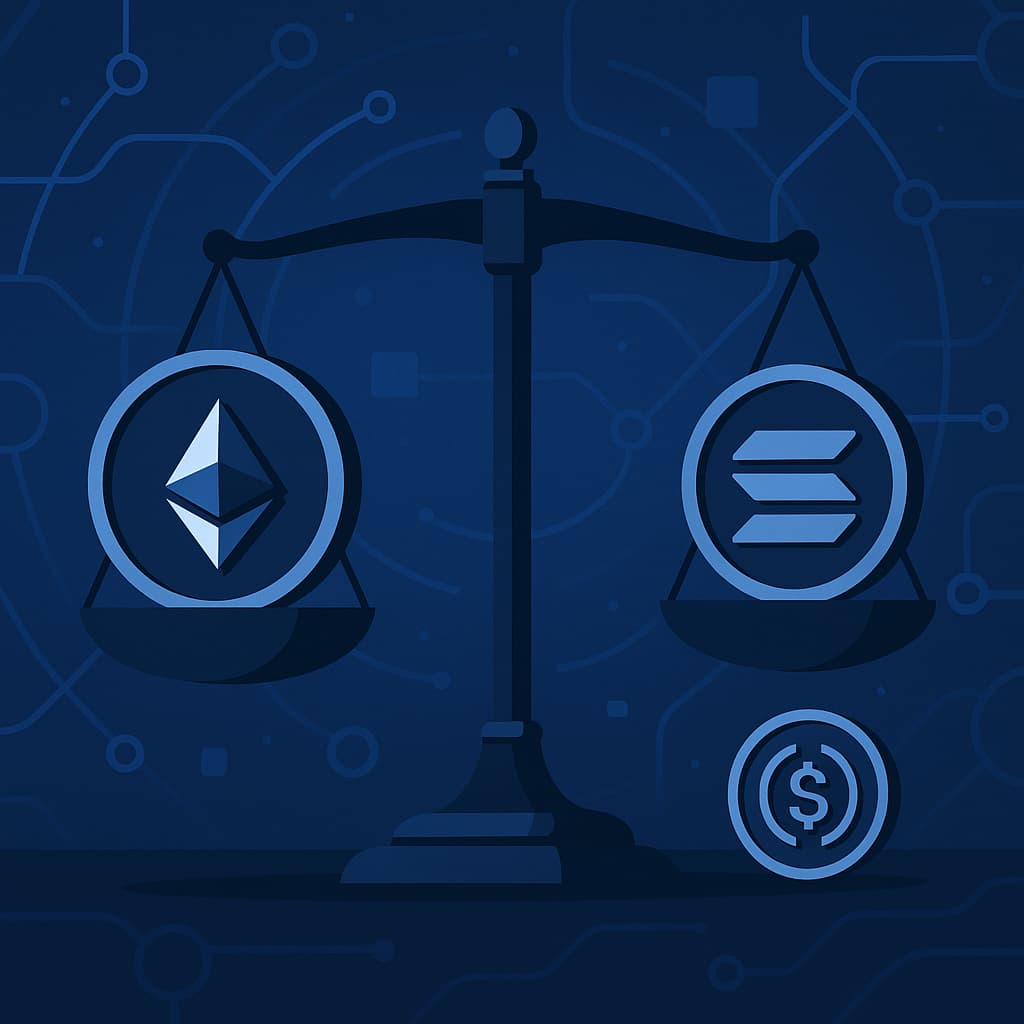-
Polygon 2.0 marks an exciting phase in the evolution of Polygon, the scaling solution for the Ethereum blockchain. Polygon Labs is at the forefront of reinventing its entire architecture, driven by the aspiration to become the "value layer of the Internet." The move will enable seamless blockchain experiences and foster a thriving ecosystem of Polygon NFT marketplace and decentralized application (dApp) development. Its blockchain app development feature aims to unify liquidity and scaling solutions.
The Vision for Polygon 2.0
Polygon 2.0 sets a remarkable vision for a blockchain platform that goes beyond mere scalability. It strives to unify liquidity across its diverse ecosystem, offering users a seamless and interconnected experience similar to a single chain. This aspiring undertaking aims to sustain unlimited scalability while maintaining a cohesive and interconnected Polygon 2.0 ecosystem.
As an Ethereum layer 2 solution, Polygon addresses the limitations of Ethereum through its sidechain approach.
You may also like | Liquidity Mining | Exploring its Potential in the DeFi World
The proposed architecture for Polygon 2.0 by Polygon Lab is a structure of protocol layers. It draws inspiration from the Internet protocol suite, renowned for its four layers (Link, Network, Transport, and Application Layer) that underpin the functionality of the Internet. The use of protocol layers in Polygon 2.0 enables logical separation, streamlining reasoning, implementation, and upgrades within the architecture.
The platform will optimize its functionalities by organizing Polygon 2.0 into the following protocol layers:
- Staking Layer
- Interop Layer
- Execution Layer
- Proving Layer
As part of its architecture, the platform aims to unify the liquidity of different networks in its ecosystem.
Suggested Read | Polygon Blockchain Explained | A Detailed Look
How Polygon 2.0 Will Provide Unified Liquidity
Polygon's founders will create unified liquidity on the platform by integrating the following features and functionalities:

Creating a Coordination Layer
Polygon 2.0 introduces a coordination layer that plays a critical role in confirming cross-chain transactions to achieve its vision of unified liquidity. This layer will enable different Polygon chains to behave in a unified manner. It will allow users to move assets seamlessly between chains without any disruptions.
The coordination layer will serve as a crucial bridge between the different Polygon chains to optimistically confirm cross-chain transactions securely and instantly. It will enhance the overall user experience by eliminating delays and bottlenecks that can occur in traditional multi-chain environments.
This shared bridge will eliminate the need for wrapped tokens to move Bitcoin onto other blockchain networks. It will deposit Ethereum tokens in a single contract.
This system will allow users to effortlessly utilize their tokens across various Polygon chains as it will efficiently mapp the corresponding assets to the tokens stored on Ethereum. Consequently, it eliminates the need for wrapping tokens.
Check It Out | Optimistic Rollups | L2 Scaling Solutions for Ethereum
Integrating Zero-Knowledge Proofs
Polygon 2.0 will embrace the power of zero-knowledge (ZK) proofs to achieve transaction bridging safely and efficiently, without compromising user privacy. This integration further enhances the platform's overall security and efficiency. Polygon will utilize ZK proofs to create a shared crypto bridge to link different Polygon chains.
Restaking Tokens
Polygon 2.0 introduces restaking as an essential feature to allow users to repurpose their staked assets. This approach provides security for various applications within the blockchain. It will enhance decentralization and ensure a robust validation mechanism while empowering users to maximize the utility of their tokens.
Explore More | Zero-Knowledge Proof for Blockchain Transaction Privacy
Conclusion
Polygon 2's bold vision, focusing on unified liquidity, coordination layers, zero-knowledge proofs, and restaking, showcases a remarkable advancement in the blockchain space. The network is addressing key challenges and offering innovative solutions. Polygon 2.0 can make significant strides toward becoming the go-to platform for dApp developers, users, and businesses alike.
With its commitment to creating the "Value Layer of the Internet," Polygon 2.0 is shaping a decentralized future that fosters interconnectedness, scalability, and an enriched user experience.
Interested in developing a blockchain-based project? Connect with our blockchain developers today.

Our Offices
INDIA
Emaar Digital Greens, Sector 61,
Gurugram, Haryana
122011.
Welldone Tech Park,
Sector 48, Sohna road,
Gurugram, Haryana
122018.















